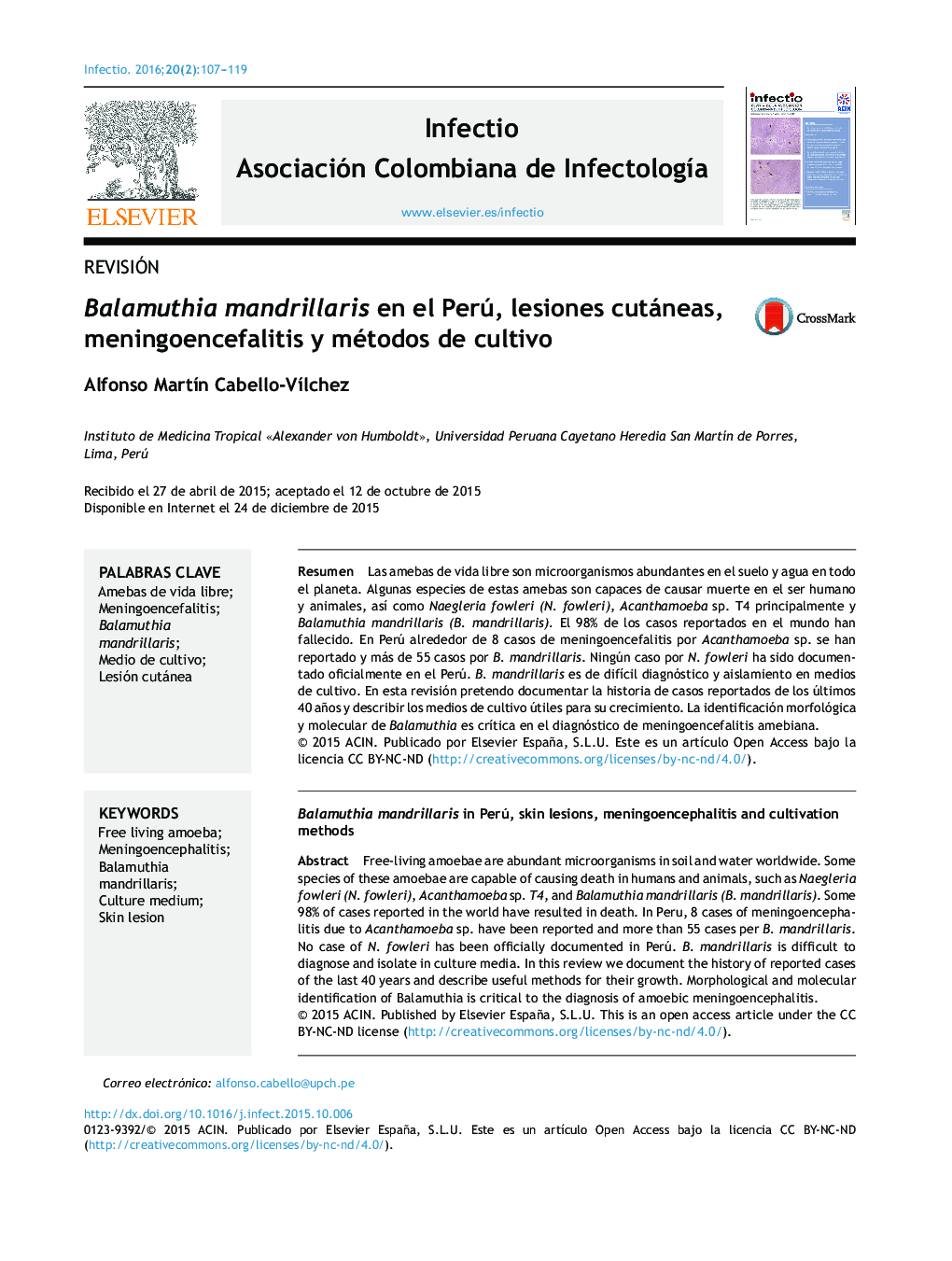| Article ID | Journal | Published Year | Pages | File Type |
|---|---|---|---|---|
| 3403650 | Infectio | 2016 | 13 Pages |
ResumenLas amebas de vida libre son microorganismos abundantes en el suelo y agua en todo el planeta. Algunas especies de estas amebas son capaces de causar muerte en el ser humano y animales, así como Naegleria fowleri (N. fowleri), Acanthamoeba sp. T4 principalmente y Balamuthia mandrillaris (B. mandrillaris). El 98% de los casos reportados en el mundo han fallecido. En Perú alrededor de 8 casos de meningoencefalitis por Acanthamoeba sp. se han reportado y más de 55 casos por B. mandrillaris. Ningún caso por N. fowleri ha sido documentado oficialmente en el Perú. B. mandrillaris es de difícil diagnóstico y aislamiento en medios de cultivo. En esta revisión pretendo documentar la historia de casos reportados de los últimos 40 años y describir los medios de cultivo útiles para su crecimiento. La identificación morfológica y molecular de Balamuthia es crítica en el diagnóstico de meningoencefalitis amebiana.
Free-living amoebae are abundant microorganisms in soil and water worldwide. Some species of these amoebae are capable of causing death in humans and animals, such as Naegleria fowleri (N. fowleri), Acanthamoeba sp. T4, and Balamuthia mandrillaris (B. mandrillaris). Some 98% of cases reported in the world have resulted in death. In Peru, 8 cases of meningoencephalitis due to Acanthamoeba sp. have been reported and more than 55 cases per B. mandrillaris. No case of N. fowleri has been officially documented in Perú. B. mandrillaris is difficult to diagnose and isolate in culture media. In this review we document the history of reported cases of the last 40 years and describe useful methods for their growth. Morphological and molecular identification of Balamuthia is critical to the diagnosis of amoebic meningoencephalitis.
